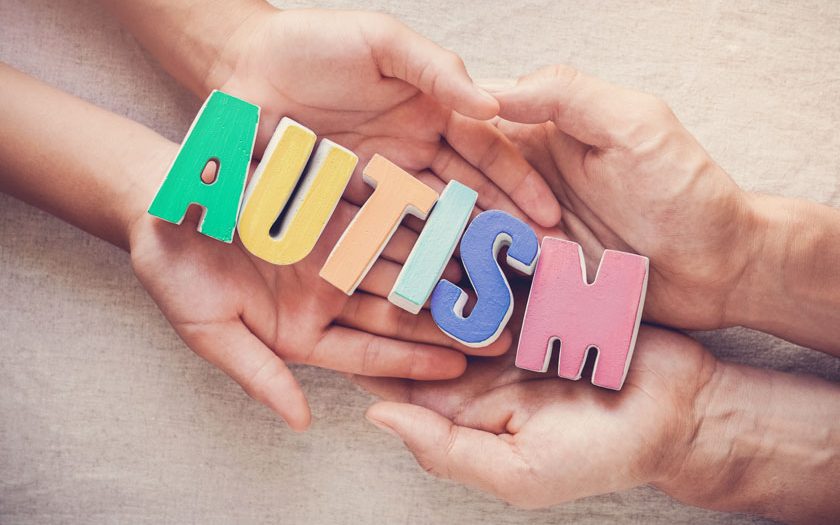Before the late 20th century, very little was known or medically researched about autism spectrum disorder. Fast forward to 2021, astounding discoveries and advancements continue to surface, making it possible for children on the spectrum to get the education they need, lead normal lives and achieve their full potential.
In this article, we take a look at some basic information every one of us should know about autism, and we talk to a couple of experts in the field as well.
We’ve all seen, or even know of parents who struggle with autistic toddlers, trying to cope with their kids’ uncontrollable outbursts. A dozen questions probably run through our minds. Such as, will this little child have a chance of attending a normal school and leading a normal life? Or, how would I cope if I was a parent of an autistic child?
By far, the one thing we do know for sure, even if we know very little about the subject of Autism spectrum disorder (ASD) is, that intervention is crucial, and it has to take place as early as possible. It also has to be done by properly trained people, not merely people with experience. Success rates are found to be exceptionally high if intervention is done well.
ASD is a complex developmental condition that involves persistent challenges in social interaction, speech and nonverbal communication, and restricted/repetitive behaviors. It’s unfortunate, and sometimes even sad when parents look for quick fixes and are not willing to incur the kind of costs it may take to deal with the reality of the situation. Apparently, there are very few establishments and people out there who are truly and specifically trained to deal with ASD and they, in the first place, had to pay the costs of acquiring adequate training.
As ASD is a social communication disorder, children who are diagnosed (or have it but are yet to be diagnosed) find it difficult to understand verbal and non-verbal communication as well as social cues. ASD typically sets in (depending on type as well as subtypes) between ages 18 to 24 months. The closer to 24 months of age it is identified and effective intervention put in place the better the results are.
Very often, children with ASD show signs of being speech delayed and that is not to be confused with a speech impairment. Intensive speech therapy a speech-language pathologist or SLP trained to work with children who have ASD specifically can yield amazing results. Alongside that, there needs to be other cognitive interventions and consistency in maintaining verbal communication from the child at all times. Children with ASD absolutely need constant interaction with people for them to gradually be integrated into mainstream schooling, which is the main aim of the intervention and therapies.
A dozen interesting facts to know about
- Autism spectrum disorder does not discriminate or choose who to affect. It may affect individuals from any nationality, creed, religion, race and from both sexes.
- Outcomes for children’s lives are significantly improved with early diagnosis and treatment.
- The term stems from the Greek word autos meaning “self”. Hence autism literally means “alone”.
- Although the causes of ASD are not known, it is known that parental behavior before, during and after pregnancy are not to blame.
- Each child with autism spectrum disorder is a unique individual; people with ASD differ as much from one another as do all people.
- Being nonverbal at age 4 does not mean children with autism spectrum disorder will never speak. Most will learn to use words and nearly half will learn to speak fluently.
- About 10% of children with autism spectrum disorder also have another genetic, neurological, or metabolic disorder.
- Individuals with autism spectrum disorder may be very creative and find a passion and may possess a talent for music, theater, art, dance and singing.
- Gender differences in symptoms have been found within the areas of social understanding, social communication, and social imagination.
- Comorbid medical conditions in autism spectrum disorder are common and may include: allergies, asthma, epilepsy, digestive disorders, feeding disorders, sleeping disorders, sensory integration dysfunction, cognitive impairments and other medical disorders.
- Up to a third of people with autism spectrum disorder also develop seizure disorders—the rate of seizures in people with ASD is 10 times higher than in the general population.
- If one identical twin has autism spectrum disorder, there is a 60-96% chance the other twin will have some form of ASD. Although fraternal twins have a lower chance of both having ASD, if one has an ASD the other has up to a 24% chance.
Sourced from: www.massgeneral.org

ABC Autism Behavioral Centre
Autism is a spectrum disorder hence children on the spectrum (mild, moderate, severe) will be affected differently. Autism primarily affects social communication and behaviors hence generally what we observe in school (if a child on a spectrum is not ready for schools due to lack of intervention/skills) could be poor communication skills (ability to request, converse, answer questions); poor language skills ( receptive skills; comprehension, challenges to follow instructions and commands); poor social skills ( maintaining eye contact, understanding the concept of waiting, when someone says no, understanding the concept of lining up/ winning and losing, understanding social rules like keeping seated in the classroom); as well as behaviour repertoire that is a barrier to learning (rigid behaviors, insisting certain routines remain unchanged, inability to be flexible, socially inappropriate behaviors; flapping hands, mouthing items, rocking, lining up objects, etc, temper tantrums and meltdowns).
To date, there are no known causes of autism. There are some preliminary studies suggesting autism is caused by a combination of biological and environmental factors. Depending on the deficits, a child will need to undergo intervention/therapy before accessing mainstream education. Early intervention starting between 2-3 years old ideally produces the best outcomes for children with autism. Longitudinal studies on ABA therapy suggests children can be ready for school between 2-3 years, as long as the intervention is intensive (30-42 hours a week) and begins early. To better manage behavioral challenges, enrollment into an intervention program that also provides parent training will equip the family with skills to support and manage a child outside of therapy. With early identification and intervention, many individuals on the spectrum are able to access mainstream education and go on to live normal lives. However, there are also individuals on the spectrum that require long term care and support throughout their life. This is generally observed in severely affected individuals that did not receive quality intervention and parent training. Firstly, it is important to accept child may require more support than most children, and to work with the school to create an IEP (individualised education program) that outlines the short term and long term goals to be achieved, as well as how to achieve them. A good IEP will include the roles and expectations of all parties that are involved in your child’s education eg: parents/ teachers. Picking the right school that is inclusive and qualified/trained is incredibly pertinent. Speak to your team to advise on school readiness and the best schools to support your child needs.

Consultant Paediatrician,
Sri Kota Specialist Medical Centre
In a small proportion of children with the condition, a specific medical disorder is identified, but the causal significance in many instances is unclear. Currently, the medical conditions that are associated with ASD include
- Fragile X syndrome
- Tuberous Sclerosis
- Abnormalities of chromosome 15 involving the 15q11-13 region.
- Various other single-gene mutations, genetic syndromes, chromosomal abnormalities and rare de novo copy number variants have been reported as being possibly implicated in etiology, as have several ante and postnatal exposures and complications.
Autism spectrum disorders tend to be highly comorbid with other disorders. Comorbidity may increase with age and may worsen the course of youth with ASDs and make intervention/treatment more difficult. Distinguishing between ASDs and other diagnoses can be challenging because the traits of ASDs often overlap with symptoms of other disorders, and the characteristics of ASDs make traditional diagnostic procedures difficult. Some of the known comorbidities are as follows: –
- Intellectual disabilities are some of the most common comorbid disorders with ASDs. Recent estimates suggest that 40–69% of individuals with ASD have some degree of an intellectual disability
- Learning disabilities are also highly comorbid in individuals with ASD. Approximately 25–75% of individuals with an ASD also have some degree of a learning disability
- Gastrointestinal (GI) problems
- Epilepsy – occurs in 11–39% of individuals with ASD
- Feeding issues
- Disrupted sleep
- Attention-deficit/hyperactivity disorder(ADHD)
- Anxiety Disorder
- Depression-Rates of comorbid depression in individuals with an ASD range from 4–58%
- Obsessive-compulsive disorder(OCD)
- Schizophrenia
- Bipolar Disorder


